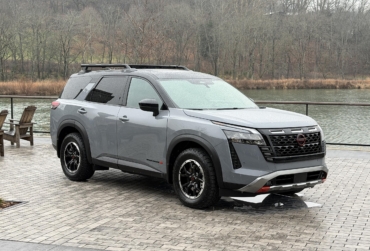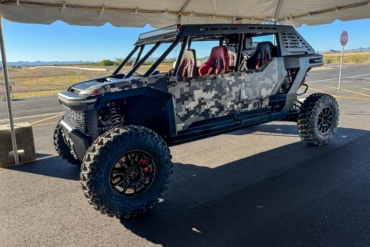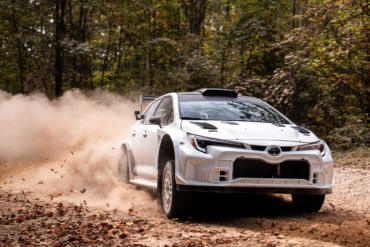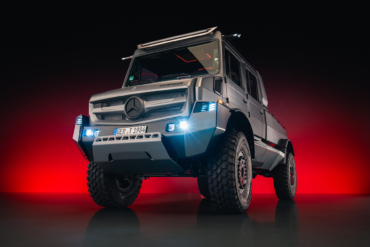The Mercedes-Benz Sprinter — the most iconic van life conversion chassis — is finally going all-electric. The battery-electric (BEV) van will arrive in U.S. and Canadian showrooms in the second half of 2023.
From the outside, the eSprinter will look familiar: a 170-inch long, long wheelbase cargo van with a high roof. Inside, it will look familiar as well, as the interior changes very little from the standard Sprinter. The infotainment system, the latest MBUX system that has been optimized with useful electric vehicle features, will make its appearance in the Sprinter for the first time.

Electrified Sprinter
However, under the hood and below the floor now sits a fully electric powertrain. This includes an electric motor in the rear paired with an electric rear axle and a large 113-kilowatt-hour battery under the load floor between the axles. It’s quite the departure from its dino-juice-fueled sibling.
For starters, the “permanent magnet synchronous motor” weighs about 286 pounds. It’s available in two power-level options of either 100 or 150 kilowatts of peak output. The motors can produce up to 295 pound-feet of torque.
To power said motor, the eSprinter available at launch will have a large 113kWh battery.
The available range should be about 200 miles. For city driving alone, the battery is expected to last up to about 250 miles.
According to company claims, charging the van from 10 to 80% capacity will take about 42 minutes when using a fast charger.
eSprinter Designed to Carry Cargo
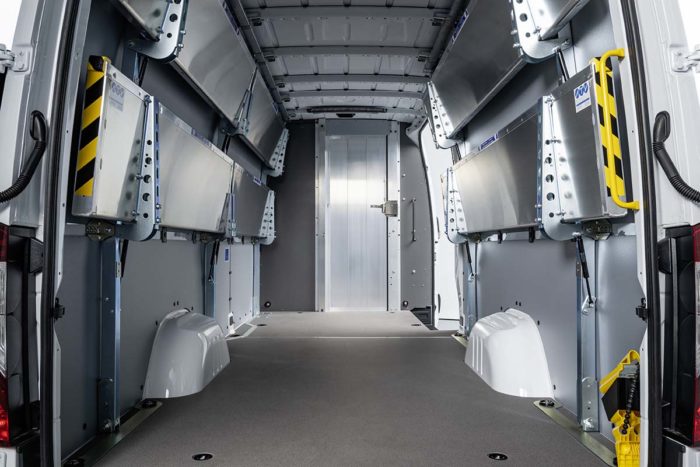
The load capacity of the eSprinter is an impressive 488 cubic feet, the same found in its dino-juice-sipping siblings.
Mercedes puts the gross vehicle weight rating (GVWR) at 9,370 pounds. The payload capacity of the eSprinter is 2,624 pounds, which should be plenty for full camper build-outs, but is over 600 pounds less than a comparable non-electrified Sprinter.
Three-Module Electrified Van Architecture
The eSprinter is based on a design concept aimed at maximizing flexibility in conversions, with three modules for allowing the “greatest possible freedom,” the company said in a news release.
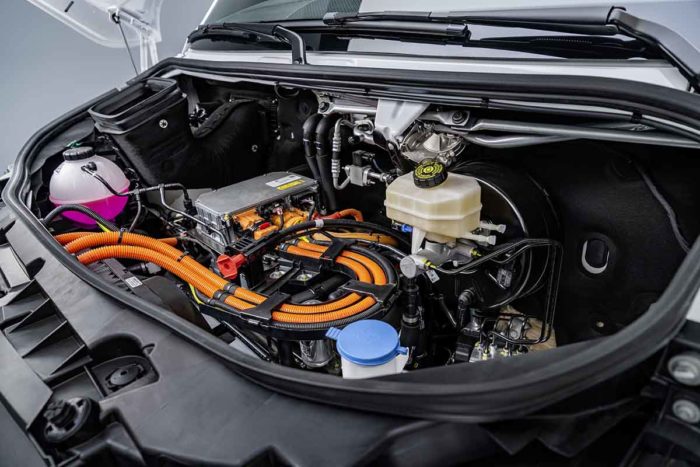
The first module, or front section of the vehicle, stores nearly all the high-voltage components and “can be combined unchanged” to all vehicle variants, regardless of wheelbase and battery size. A second module focuses on the underbody and the van’s high-voltage battery, stashed between the axles with the battery housing to save space. Finally, there’s the rear module, which includes the electric rear axle and electric motor.
“The new eSprinter is the most versatile Mercedes-Benz eVan ever,” said Mathias Geisen, Head of Mercedes-Benz Vans.
Mercedes-Benz eSprinter: Camper Van Dreaming?
With the cargo size capacity and likely weight capacity being about the same as traditional Sprinter vans, the eSprinter is likely to have quick adoption by the van life crowd and camper van upfitters alike. With a 200-plus mile range and fast charging capabilities, the eSprinter will also meet the demands of all but the most hard-core long-haul van life/RV road warriors. Of course, as charging infrastructure improves, the eSprinter will just become even more appealing to van lifers.
The eSprinter represents an important milestone for Mercedes-Benz, as the company plans to only launch all-electric new models starting in 2025. It’s part of the company’s need to meet the evolving vehicle requirements of the European Union (EU). In October, EU officials agreed to end the sale of CO2-emitting vehicles by 2035.
A price tag for the new eSprinter van has yet to be announced, but expect it closer to the on-sale date later this year.



